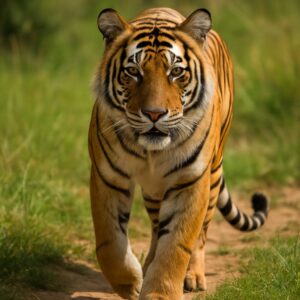 Big cats have captivated human imagination for centuries. From the roar of a lion echoing across the savanna to the stealthy leap of a snow leopard in the Himalayas, these magnificent predators reign supreme. At Vero Q&A, we dive deep into what makes big cats the ultimate apex predators in the animal kingdom.
Big cats have captivated human imagination for centuries. From the roar of a lion echoing across the savanna to the stealthy leap of a snow leopard in the Himalayas, these magnificent predators reign supreme. At Vero Q&A, we dive deep into what makes big cats the ultimate apex predators in the animal kingdom.
Who Are the Big Cats?
Big cats typically refer to members of the Panthera genus, which includes:
- Lion
- Tiger
- Leopard
- Jaguar
- Snow Leopard
Cheetahs and cougars, while not part of Panthera, are often grouped in due to their size and predatory power.
Unmatched Physical Power
These predators possess muscular builds, retractable claws, and sharp teeth designed for gripping, tearing, and suffocating prey. Tigers, for instance, are the largest of the big cats and can take down prey much larger than themselves, such as buffalo and deer.
Advanced Hunting Skills
Big cats are master strategists. Lions often hunt in coordinated prides, while leopards rely on stealth and solitary ambushes. Jaguars can crush skulls with their bite, and snow leopards can leap six times the length of their body across rocky cliffs.
Their tactics depend on their environment, prey type, and social behavior, showing just how adaptable and intelligent they are.
Territorial Dominance
Each big cat claims and fiercely defends its territory. Scent markings, roars, and physical confrontations serve as warnings to rivals. This territorial behavior ensures access to hunting grounds and mating rights, securing their place at the top of the food chain.
Sensory Superpowers
Big cats have enhanced senses:
- Night Vision: Six times better than humans.
- Hearing: Can detect the high-pitched sounds of small prey.
- Smell: Used to identify territory boundaries and potential mates.
These senses make them efficient hunters, even under the cover of darkness or dense jungle.
Stealth and Speed
Leopards are the masters of stealth – their spotted coats blend seamlessly into the foliage. Tigers stalk silently through tall grass. Cheetahs, though not a Panthera member, reach speeds up to 70 mph, making them the fastest land animals.
Cultural and Ecological Importance
Big cats are often symbols of power, royalty, and mystery in human cultures. Ecologically, they help maintain balance in their habitats by controlling herbivore populations, which in turn preserves vegetation and ecosystem health.
Threats and Conservation
Despite their dominance, big cats are under threat:
- Habitat Loss: Due to agriculture, deforestation, and urbanization.
- Poaching: For fur, bones, and in some cases, traditional medicine.
- Human-Wildlife Conflict: As habitats shrink, encounters with humans increase.
Efforts like protected reserves, anti-poaching patrols, and international treaties are helping, but continued global support is vital.
Are Big Cats the Ultimate Apex Predators?
1. What is the biggest species of big cat?
The tiger, especially the Siberian subspecies, is the largest.
2. Are cheetahs considered big cats?
No, they’re not in the Panthera genus, but they’re often grouped in due to size and speed.
3. How do big cats kill their prey?
Mostly via suffocation – biting the neck or muzzle to cut off air.
4. Why are big cats endangered?
Mainly due to habitat loss, poaching, and human conflict.
5. Can big cats purr like domestic cats?
No. Most Panthera cats roar but cannot purr continuously like house cats.
6. What role do big cats play in the ecosystem?
They control prey populations, helping keep ecosystems balanced and healthy.
Big cats symbolize nature’s raw power, agility, and grace. At Vero Q&A, we highlight their importance not only as predators but as vital protectors of biodiversity. Preserving them ensures the health of entire ecosystems and reminds us of the beauty and balance of the natural world.